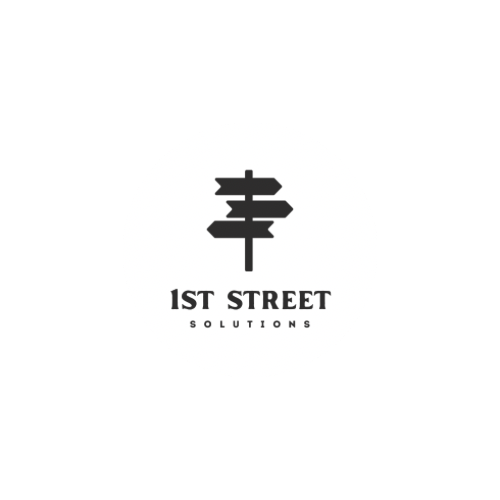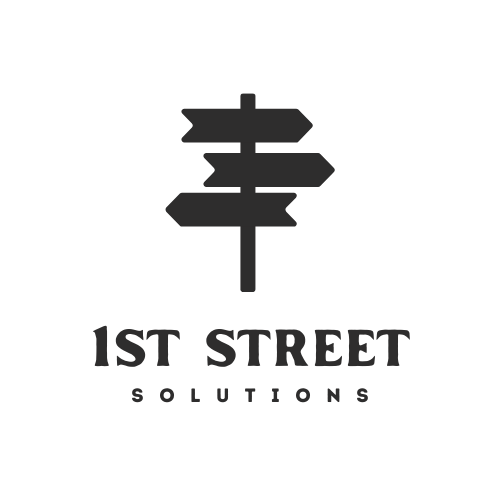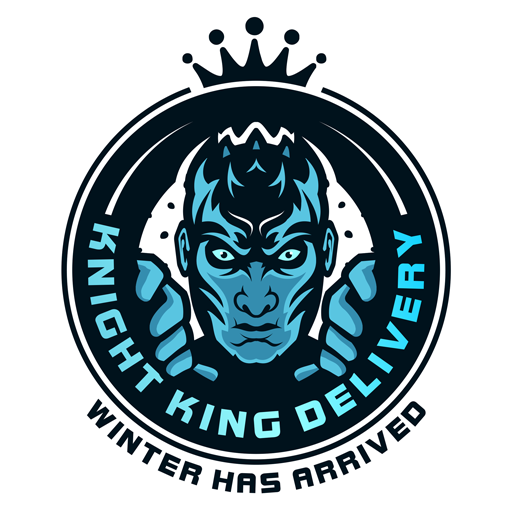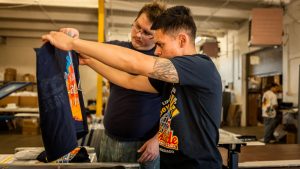In the world of embroidery, every stitch counts, turning simple designs into captivating works of art that elevate fashion, branding, and personal creations. Professional services like ZDigitizing deliver meticulously crafted files in 2-12 hours for $10-$20 per design, bypassing the need for expensive software ($1,000-$5,000) or technical expertise. This comprehensive blog dives into the critical role of detail in embroidery digitizing services, exploring how precision enhances quality, aesthetics, and functionality for designers, businesses, and hobbyists. With actionable guidance and a concise FAQ, this guide illuminates how to achieve stunning embroidery through meticulous digitizing in 2025.
Why Detail is Essential in Embroidery Digitizing
Detail in embroidery digitizing services is the difference between a mediocre design and a masterpiece. From intricate floral motifs on a gown to tiny monograms on a cuff, precise stitch files ensure clarity, durability, and visual impact. Professional digitizing services like ZDigitizing use advanced tools and expertise to capture every nuance of a design, tailoring files for specific fabrics, machines, and placements. This precision is vital for projects ranging from high-end fashion to corporate branding, ensuring embroidered products shine in boutiques, on Instagram, or at events.
Core Reasons Detail Matters in Embroidery Digitizing
Here’s why meticulous attention to detail in digitizing services is indispensable:
1. Achieving Clarity in Complex Designs
- Fine Detail Reproduction: Experts digitize intricate elements like small text (0.1-0.25 inches) or delicate patterns using precise satin stitches, ensuring readability and sharpness.
- AI-Enhanced Precision: Advanced algorithms analyze artwork to map stitches accurately, preserving details in logos or ornate designs.
- Simplified Complexities: Professionals streamline gradients or fine lines without losing the design’s essence, ensuring stitchability.
Impact: Delivers crisp, professional embroidery that captivates for fashion, patches, or personalized gifts.
2. Optimizing for Diverse Fabrics
- Fabric-Specific Adjustments: Detailed digitizing tailors stitch density (0.3-0.5 mm) and underlay (e.g., zigzag for knits, grid for twill) to prevent puckering on materials like silk, denim, or fleece.
- Pull Compensation: Accounts for fabric stretch (0.2-0.3 mm), maintaining design integrity on stretchy or delicate fabrics.
- Stabilizer Guidance: Professionals recommend appropriate stabilizers (e.g., tear-away for cotton, water-soluble for tulle), ensuring smooth results.
Impact: Ensures flawless embroidery across varied fabrics, enhancing garment quality and durability.
3. Enhancing Aesthetic Appeal
- Color Accuracy: Detailed digitizing maps colors to thread charts (e.g., Madeira, Isacord) or Pantone codes, ensuring vibrant, true-to-design hues.
- Stitch Type Precision: Uses satin stitches for outlines, fill stitches for backgrounds, or specialty techniques like 3D puff for depth, elevating visual impact.
- Placement Accuracy: Files are customized for specific placements (e.g., cuffs, jacket backs), aligning with design intent.
Impact: Creates visually stunning embroidery that boosts marketability for retail or social media.
4. Ensuring Durability and Functionality
- Robust Underlay: Detailed underlay stitching secures designs, preventing unraveling on high-wear items like uniforms or bags.
- Thread Optimization: Recommends high-quality polyester threads for durability and fade resistance, preserving design longevity.
- Error-Free Files: AI-driven checks eliminate issues like stitch overlaps or gaps, ensuring smooth machine performance.
Impact: Produces long-lasting embroidery that maintains quality through use and washing.
5. Supporting Small and Intricate Designs
- Micro-Embroidery Expertise: Optimizes tiny text or motifs for small areas (e.g., 1×1 inch hoops), using fine needles and satin stitches for clarity.
- Hoop Compatibility: Files are tailored for small or specialized hoops, common in accessories or patches.
- Detail Preservation: Simplifies intricate designs while retaining their essence, ensuring stitchability without distortion.
Impact: Enables detailed embroidery for delicate items like jewelry or monogrammed cuffs, appealing to niche markets.
6. Streamlining Production Efficiency
- Production-Ready Files: Detailed files ensure compatibility with specific machines (e.g., Brother PE800, Tajima TMBP), reducing setup time.
- Batch Consistency: Uniform stitch patterns ensure identical results across bulk orders, critical for branding or collections.
- Fast Turnarounds: ZDigitizing delivers files in 2-12 hours, with rush options under 2 hours, keeping projects on schedule.
Impact: Saves time in production, enabling quick market delivery for businesses or designers.
7. Enabling Creative Freedom
- Complex Design Support: Handles intricate patterns, cultural motifs, or 3D effects, allowing designers to push creative boundaries.
- Customizable Outputs: Supports unique techniques like appliqué or metallic threads, aligning with artistic visions.
- Digital Previews: Real-time previews ensure every detail aligns with the design, minimizing revisions.
Impact: Empowers designers to create bold, innovative embroidery without technical limitations.
Practical Steps to Harness Detailed Digitizing
Maximize the benefits of detailed digitizing with these steps:
- Select a Precision-Driven Provider (5 minutes):
- Choose a service like ZDigitizing with expertise in detailed embroidery, supporting formats like DST, PES, or VP3.
- Verify digital previews, unlimited revisions, and 24/7 support for seamless collaboration.
- Prepare Detailed Artwork (5-10 minutes):
- Submit high-resolution (300 DPI) JPG, PNG, or AI files with clear, bold designs (3-5 colors, elements at least 0.1 inches wide).
- Simplify intricate patterns using tools like Adobe Illustrator or Canva.
- Specify thread colors with Pantone codes or charts for accuracy.
- Provide Precise Specifications (5-10 minutes):
- Upload artwork via a secure portal with SSL/TLS encryption.
- Specify:
- Design Size: E.g., 1-2 inches for micro-embroidery, 4-6 inches for logos.
- Placement: E.g., collar, patch, or jacket back.
- Fabric: E.g., silk, twill, or knit.
- File Format: Check your machine’s manual (e.g., PES for Brother, DST for Tajima).
- Techniques: E.g., satin stitches, 3D puff, or appliqué.
- Machine Model: E.g., Brother PE800, Tajima TMBP.
- Note project goals (e.g., fashion line, branding) for tailored files.
- Review Digital Previews (5-10 minutes):
- Check stitch patterns, density, colors, and alignment for detail accuracy and fabric suitability.
- Verify small text or intricate elements, requesting revisions for issues like blurring or gaps.
- Test and Produce (10-20 minutes):
- Download files in 2-12 hours via a secure link.
- Test on scrap fabric matching your project (e.g., chiffon for gowns) with appropriate stabilizers (tear-away for stable fabrics, water-soluble for sheer ones).
- Inspect for puckering, thread breaks, or misalignment, contacting support for quick fixes.
- Produce final items with high-quality polyester threads, starting with a small batch.
Total Time: ~20-50 minutes, with professionals handling intricate digitizing tasks.
Tip: Archive files and settings digitally for quick reuse in future projects or collections.
Applications of Detailed Digitizing
Detailed digitizing enhances various projects:
- Fashion Design: Intricate floral motifs or micro-embroidery on gowns or streetwear for runways or boutiques.
- Branding: Precise logos on uniforms or caps, ensuring clarity and consistency for corporate identity.
- Personalized Gifts: Detailed monograms on handkerchiefs or bags for weddings or special occasions.
- Patches and Accessories: Sharp, small-scale designs for patches or jewelry, appealing to niche markets.
- Cultural Designs: Heritage-inspired patterns on apparel or accessories for global or Etsy sales.
ZDigitizing’s precision ensures exceptional results across these applications.
Addressing Challenges with Detailed Digitizing
Professional services overcome common detail-related hurdles:
- Loss of Fine Details: Small text or intricate patterns may blur.
- Solution: Experts use satin stitches and simplify designs, verified in previews.
- Fabric Distortion: Dense stitching can damage delicate materials.
- Solution: Specify fabric for tailored density and underlay, tested on scrap material.
- Color Inaccuracy: Threads may not match design hues.
- Solution: Use Pantone codes and formats like PES for precise color mapping.
- Machine Errors: Incorrect settings cause stitching issues.
- Solution: Provide machine model and format for seamless execution.
Future of Detail in Embroidery Digitizing
In 2025, detailed digitizing will advance with:
- AI-Powered Accuracy: Enhanced algorithms for micro-embroidery and complex patterns, minimizing errors.
- AR Visualization: Real-time previews of detailed designs on garments, streamlining approvals.
- Smart Machine Integration: IoT-enabled machines adjust settings for intricate designs, ensuring precision.
These innovations will make detailed digitizing even more impactful.
Conclusion
Detail in embroidery digitizing services is the cornerstone of creating stunning, high-quality embroidery that elevates fashion, branding, and personalized creations. Services like ZDigitizing deliver precise stitch files in 2-12 hours for $10-$20, ensuring clarity, durability, and aesthetic appeal without requiring software or expertise. By partnering with a trusted provider, submitting clear artwork, specifying project needs, reviewing previews, and testing files, you can achieve meticulous embroidery that captivates audiences. With AI, AR, and IoT advancements shaping 2025, detailed digitizing will continue to redefine embroidery, blending precision with artistry.
FAQ: Importance of Detail in Embroidery Digitizing
Why is detail crucial in embroidery digitizing?
It ensures clarity, durability, and aesthetic appeal for intricate designs, enhancing quality across projects.
How does professional digitizing ensure detailed results?
It uses AI, precise stitch mapping, and fabric-specific adjustments for flawless embroidery.
What projects benefit from detailed digitizing?
Fashion design, branding, personalized gifts, patches, and cultural designs.
How fast are detailed digitizing services?
Files are delivered in 2-12 hours, with rush options under 2 hours.
What’s the cost of detailed digitizing?
Rates start at $10-$20 per design, with bulk discounts for multiple files.
How do I achieve detailed embroidery?
Choose a provider like ZDigitizing, submit clear artwork, specify details, review previews, and test files.
What challenges affect detailed embroidery?
Detail loss, fabric distortion, or color inaccuracies; solved with expert optimization and testing.
What artwork is best for detailed digitizing?
High-resolution (300 DPI) JPG, PNG, or AI files with bold, clear designs (3-5 colors).
What technologies support detailed digitizing?
AI, AR, secure cloud platforms, and encryption ensure precision and efficiency.
What’s the future of detailed digitizing?
AI accuracy, AR visualization, and IoT integration will enhance precision and creativity.








